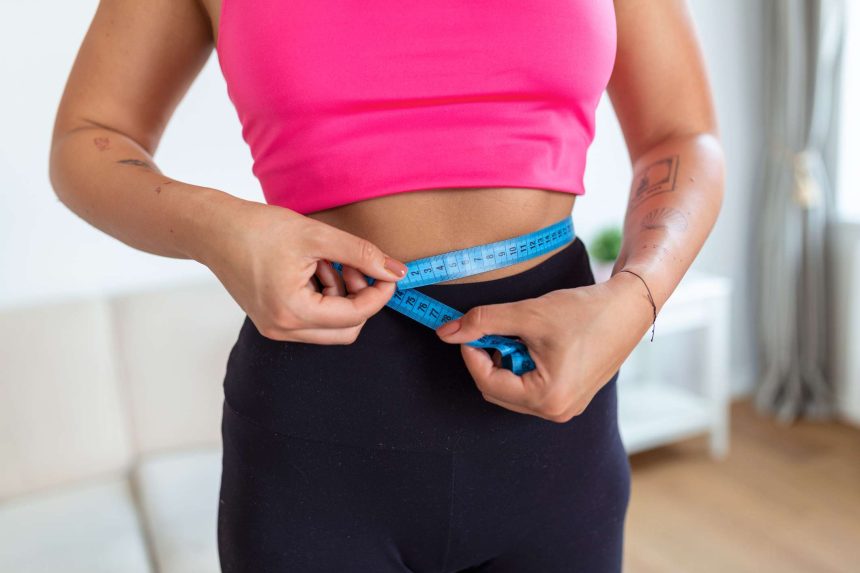Your waist size can help you understand your overall health. A larger waistline may indicate you’re carrying more abdominal fat, which puts you at risk for obesity-related health conditions. Waist measurements can give insight into your risk for type 2 diabetes, high blood pressure, high cholesterol, and heart disease.
Your waist measurement is one of three key measures of your overall health, along with body mass index (BMI) and waist-to-hip ratio. Some research suggests waist measurement may be a better health indicator than BMI and waist-to-hip measurements in identifying intra-abdominal fat content and cardiovascular risk factors.
Waist circumference helps diagnose people who are overweight or obese and indicates related possible health risks. Research shows people with a majority of body fat around the waist rather than hips have a higher risk for heart disease and type 2 diabetes. Your risk increases if your waist size is greater than 35 inches for women or 40 inches for men.
One study found that people with larger waistlines may also have a shorter life expectancy. In the study, women with a waist measurement of 37 inches (94 centimeters) or higher had an 80% higher risk of death than women whose waist measured 27.5 inches (70 centimeters) or lower.
Meanwhile, men with a waist measuring 43 inches (110 centimeters) or higher had a 50% greater risk of death than men with a waist measuring 37 inches (94 centimeters) or lower.
Reducing your waist size by about 1.5 inches (4 centimeters) can reduce your health risks, including your risk of developing type 2 diabetes, heart disease, and stroke. Keep a record of your waist circumference and body weight over time. This can help you and your healthcare provider understand how your body is changing as you age and help monitor your disease risk.
There is no standard method among health organizations for measuring your waist.
The World Health Organization (WHO) suggests measuring waist circumference between the lowest rib and the top of the iliac crest (the curved part at the top of the hip). Other health organizations suggest measuring at the lowest part of the torso or the level of the umbilicus (navel).
One study found that measuring the narrowest part of the torso is as effective as following the WHO guidelines—and it’s easier. If you measure your waist consistently for weight management, measuring the same part of your waist each time is most important.
Follow these steps to measure your waist:
- Prepare for measurement: Choose a flexible tape measure that will bend easily around your waist
- Choose the location of your measurement: Choose the narrowest part of your torso or find the spot between the lowest rib and the top of the iliac crest, making sure to measure in the same spot each time
- Measure your waist: Place a tape measure around your bare belly (making sure it is snug but not pushing in your skin), breathe out, and measure your waist
- Repeat the measurement to ensure accuracy: Take the measurement a second time to ensure your first measurement was accurate
- Record the measurement: Record the measurement (along with date and time) in a notebook or on your phone, and try to take future measurements at the same time of day
While measuring your waist seems like a simple process, there are a few common mistakes people make. To ensure you’re getting the most accurate measurement of your waist circumference, here are some tips to follow and common mistakes to avoid:
- Avoid measuring over bulky clothing: Measure over bare skin or very thin clothing to get the most accurate results
- Refrain from holding your breath: Make sure to breathe out before measuring, as holding your breath can result in an inaccurate measurement
- Try not to pull the tape measure too tight: Aim for a snug but relaxed fit, as pulling too tight can result in an inaccurate measurement
- Stand up straight: Avoid poor posture or slouching, which can affect your measurement
- Take your time: Avoid rushing through the measurement, double-checking the placement and numbers on the measuring tape
- Avoid measuring after a meal: Try to measure your waist in the morning before eating for accurate measurement, as your waist will likely expand after eating
- Measure twice: Measure more than once to ensure your measurements are accurate
Knowing your waist measurement can also help determine other waist-related measurements, offering additional health insights.
Waist-To-Height Ratio
Once you know your waist circumference, you can find your waist-to-height ratio. This ratio can help determine if your waist size is where it needs to be for optimal health.
To find your waist-to-height ratio, divide your waist measurement by your height. Make sure to use the same units of measurement; if you measured your waist in inches, measure your height in inches as well.
Your healthcare provider can advise you on your optimal waist-to-height ratio. Some research suggests a ratio of 0.4-0.49 is optimal, while a ratio of 0.5-0.59 indicates an increased risk of health problems. A ratio of 0.6 or more may indicate a high risk of disease.
Waist-To-Hip Ratio
You can also use your waist circumference measurement to help calculate your waist-to-hip ratio. To do this, divide your waist measurement by your hip measurement, which is taken around your hips at their widest point. The WHO defines obesity as a ratio of more than 0.85 for women and 0.9 for men.
Some research shows that waist-to-hip ratio may be more accurate than BMI in predicting cardiovascular disease and premature death. One study of 15,000 people found that people with a high waist-to-hip ratio had an increased risk of early death—even if their BMI was moderate.
Waist measurements can help you assess your risk for conditions like heart disease and type 2 diabetes. They can also help you monitor your progress when trying to lose weight. Measuring your waist may provide more insight into your success than your body weight, especially if you have added strength training to your routine.
One study found that measuring waist size after aerobic exercise was a better indicator of progress than measuring weight. This could be partly because muscle mass changes through exercise, and as muscle mass increases, body weight may increase.
If you want to reduce your waist size, consider lifestyle changes like exercising more and eating a balanced diet rich in fruits and vegetables. Limiting alcohol and avoiding smoking can also help.
Managing existing health conditions, such as type 2 diabetes, can also help reduce waist size. Research shows that medications like Ozempic (semaglutide) and Saxenda (liraglutide) can help control blood sugar and reduce waist circumference in people with diabetes.
Measuring your waist can help you determine if you are at risk for certain health conditions like type 2 diabetes, heart disease, and high blood pressure.
To get an accurate measurement of your waist, use a flexible tape measure to measure around your bare stomach. Aim to record measurements consistently, measuring in the same location and at the same time of day each time. Avoid holding your breath or pulling the measuring tape too tight.
You can use your waist measurement to calculate your waist-to-hip ratio and waist-to-height ratio—both of which can provide more insight into your current health status and whether or not you need to make changes.






